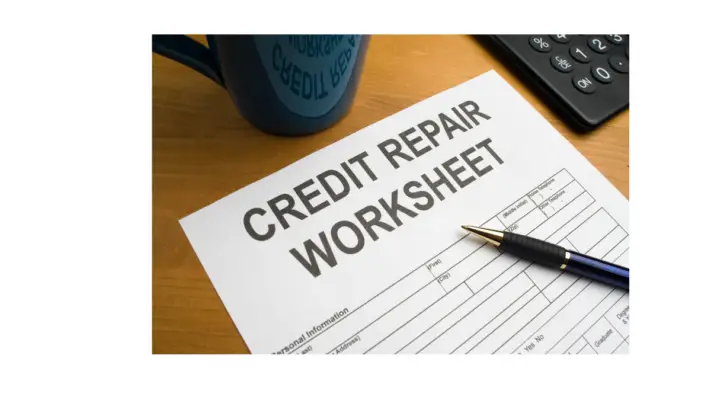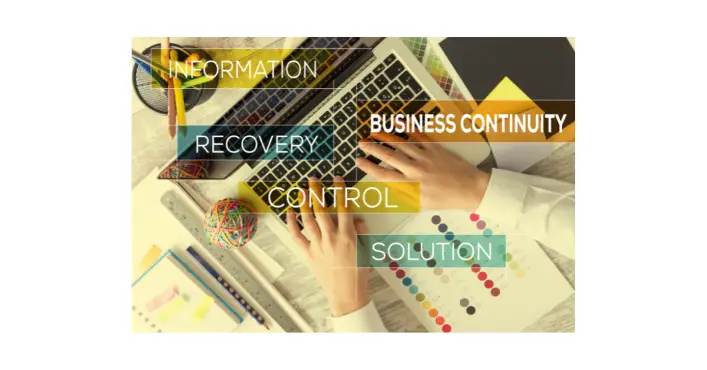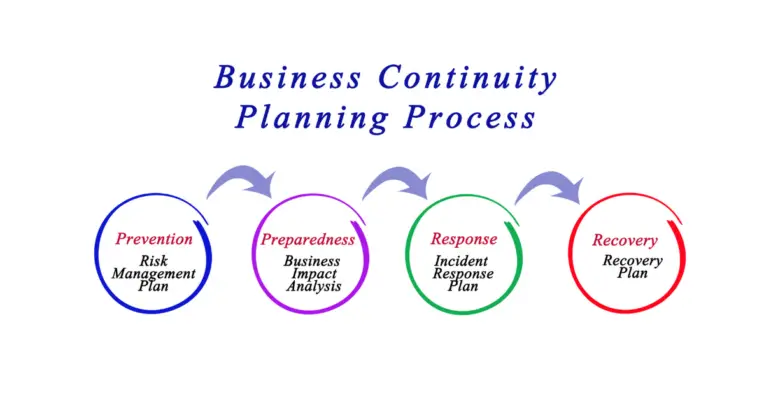A business continuity plan is important for any business, but it is especially critical for a credit repair business. The goal of a business continuity plan is to keep the business running in the event of an emergency, such as a natural disaster or data breach.
A credit repair business must be able to quickly and effectively provide credit counseling and dispute resolution services to its clients to maintain its good standing with the credit bureaus. To create an effective business continuity plan, there are a few key steps that must be taken.
First, the business must identify its critical functions and assess the risks that could disrupt those functions. Next, the business must develop strategies for maintaining or restoring those critical functions in the event of an interruption. Finally, the business must create a communication plan to ensure that all stakeholders are kept informed in the event of an emergency.
The number of credit repair services companies in America has been steadily declining for years, with the industry losing close to 8% between 2021 and 2022. This is due largely because there were 69,000 such businesses last year but only 40,311 now; however this drop isn’t much compared to what would be expected based on population growth rates or other factors that may affect both total numbers and revenue amounts.
Are you interested in creating a credit repair business continuity plan ? Well it’s possible to create a credit repair business continuity plan, but the biggest benefit is that the initial cost of the business is very low. It’s also possible to start it in a virtual location or even in an office and can also improve setup over time.
Credit repair firms improve the credit rating of customers through the identification and dispute of inaccurate information. Given inflation today credit repair is essential for businesses and individuals alike but also to the larger businesses as a whole.
Modern businesses and organizations have been exposed to the risks of natural disasters, and cyber-attacks since 2020. In emergencies businesses could suffer substantial financial reputation loss or regulatory damage.
To prevent an unforeseen disruption, a company should quickly take actions that will facilitate continuity and improve operations. An efficient way to restructure your business continuity plans is to formulate and outline what to do if unforeseen business disruption occurs to your business.
Credit repair businesses are especially vulnerable to disruptions, as they often deal with sensitive customer information. As a result, it is essential to have a well-designed continuity plan in place. This article will provide an overview of the key components of a credit repair business continuity plan. It will then explain how to create and implement such a plan.
Credit Repair Companies
A credit repair company offers a free consultation to see if their services are right for you. They will review your credit report and develop a plan of action. This business deal is a great way in developing your credit score for improvement. The company will work with you to dispute any negative items on your report.
They will also help you develop good financial habits so you can avoid future damage to your credit. These services target market is small businesses or any clients who wants to improve their credit score. The credit repair company will work with you to create a customized plan that fits your needs and budget.
A credit repair company needs to have a business continuity plan (BCP) which is a document that outlines how a business will continue to function during and after an disruptive event. The goal of a BCP is to minimize downtime and maintain productivity in the face of an unexpected event.
Credit Repair Services
There are many credit repair businesses out there, but not all of them are created equal. When choosing credit repair services, it’s important to look for a company that has a solid business plan and a continuity plan in place. After all, you don’t want to be stuck with a company that’s constantly changing its offerings or that doesn’t have a clear target audience.
It’s also important to make sure that the credit repair service you choose has experience dealing with clients in your situation. After all, repairing credit is a delicate process, and you don’t want to entrust your financial future to someone who isn’t up to the task.
Its important to be aware of the potential risks involved in any business deal. Make sure you understand the terms and conditions of the service before agreeing to anything. It’s also important to know who their target audience is. If you’re not careful, you could end up paying for services that you don’t need or that won’t be effective.
The best credit repair services will have a team of experienced professionals who are familiar with the ins and outs of the credit repair process. They should also offer a money-back guarantee, so that you can get your money back if you’re not satisfied with the results.
Finally, make sure you understand the pricing structure of the credit repair service you’re considering. Some companies charge a flat fee, while others charge based on the number of items on your credit report. Choose the option that makes the most sense for your financial situation.

Benefits of a Business Continuity Plan for a Credit Repair Business
There are numerous benefits to having a business continuity plan in place for a credit repair business. Here are just a few of the most important ones:
- A business continuity plan ensures that your credit repair business can continue to operate following an unexpected event or disruption. This is critical in maintainin your reputation and keeping your customers happy.
- A well-designed business continuity plan will help protect your employees, customers, and other stakeholders by providing clear guidance on what needs to be done in the event of an unexpected interruption.
- A business continuity plan can help minimize the financial losses that may result from an unforeseen event or disruptions, by minimizing downtime and ensuring that essential operations can quickly resume.
- A business continuity plan can also help you take advantage of opportunities that may arise in the aftermath of a crisis, such as increased demand for your services or the ability to attract new customers.
Disadvantages of not having a business continuity plan for a credit repair business
There are also several disadvantages to not having a business continuity plan in place for a credit repair business. These include:
- Your credit repair business will be more vulnerable to disruptions and may be forced to close down completely if it is unable to resume operations after an unexpected event.
- Your employees, customers, and other stakeholders will not have any clear guidance on what to do in the event of an interruption, which could lead to confusion and frustration.
- You may suffer significant financial losses if your credit repair business is forced to close down or scale back operations due to an unforeseen event.
- You may miss out on opportunities to take advantage of new business opportunities in the aftermath of a crisis if you do not have a plan in place.
Components of a Business Continuity Plan
- Risk assessment:- The first step is to identify the risks that can impact your credit repair business. This will help you develop strategies to mitigate or transfer these risks.
- Business impact analysis :- It is a process of defining the potential effects resulting from an interruption to critical business operations as a result of a disaster, accident or emergency. The first step in developing a business continuity plan is conducting a business impact analysis (BIA). A BIA identifies the components of your organization that are essential to its survival and success.
- Recovery strategy:- This document will help you identify the steps needed to take in order to keep your business running in the event of an emergency. It should include information on how to contact customers, suppliers, and employees; how to maintain operations; and how to protect your data and assets.
- Plan development:-Includes the initial steps on coming up with departments business continuity plans and what resources will be availed for the exercise and timelines.
- Testing and exercises:-It is important to test your plan regularly to ensure that it works as intended. This can be done through regular internal exercises or by engaging an external provider to assist with testing.Once you have tested your plan, you should revise and update it as necessary to ensure that it remains relevant and effective.
- Updates and revisions:- The plan should be reviewed and updated on a regular basis, as changes to your business or the environment in which you operate can impact its effectiveness.

Steps on How to create a business continuity plan for credit repair business
As a credit repair business, it’s essential to have a continuity plan in place to protect your clients’ data and maintain your business operations in the event of an unforeseen disaster. While no one likes to think about the possibility of a natural or man-made disaster, the reality is that it’s always better to be prepared.
Here are some steps you can take to create a business continuity plan for your credit repair business:
1.Perform a detailed risk analysis
Identifying potential threats is an important aspect for your business. the team conducts an exhaustive analysis that involves identifying risk factors and prioritizing these factors by severity and likelihood. In that phase, you must understand the risks from a business-related, economic and reputational standpoint.
Additionally, you must define the appropriate dangers and the required actions. A company could face a risk that will have a significant minimal impact on the company’s operations. Some risks can lead to an unforeseen risk and prompt business to formulate a mitigation plan.
Before a business can plan for the future, it needs to understand the risks it faces in the present. Risk analysis is a critical part of any business plan and continuity plan, and it should be an ongoing process that takes into account all aspects of the business. Operations, research, and employee form the foundation of any risk analysis.
By understanding the potential risks associated with these areas, businesses can deal with them more effectively. However, risk analysis is not a static process; as the business environment changes, so too should the risk analysis.
Businesses deal with different types of risks on a daily basis. Some of these risks are manageable, while others can have a significant impact on the business. The first step in managing risk is to identify the risks that are relevant to the business.
There are many different methods that can be used to identify risks. One popular method is brainstorming, which can be used to generate a list of risks. Another method is to review past incidents and accidents to see if there are any patterns that can be identified.
Once the risks have been identified, they need to be prioritized. This is important because it allows businesses to focus their resources on the risks that are most likely to occur. Additionally, it helps to identify the risks that could have the most impact on the business.
Once the risks have been identified and prioritized, businesses need to develop a plan for dealing with them. This plan should include both preventative measures and contingency plans. The preventative measures should be designed to reduce the likelihood of an incident occurring, while the contingency plans should be designed to minimize the impact of an incident if it does occur.
Developing a comprehensive business continuity plan can be a daunting task, but it is essential for any business that wants to protect itself from the potential impacts of a disruptive event. Disruptive risks which form the basis of business continuity management will be identified.
2.Establish a Disaster and Emergency Preparedness Team
Business continuity planning rely upon identifying business needs and conducting a thorough investigation of potential risks. Aside from that, the leaders should also take reliable decisions and propose effective solutions.
This requires the business to identify the teams responsible for the emergency preparation. In the ideal situation, the team in charge will include inter-functional leadership and members with potential value addition. Alternatively, assign a manager who coordinates and leads the work for the project in advance. Disaster preparedness teams are primarily based on the following:
-Developing the business continuity plan
-Assessing risks
-Identifying vulnerabilities
-Selecting mitigation strategies
-Establishing incident response protocols
-Conducting regular testing and training sessions
3.Analyze the impact of potential risks on business functions
Identifying and managing business risks of a credit repair business can help identify business process disruption. This team will assess and analyze all financial and operational effects of disasters on an individual businesses process and function.
In addition, they need to pinpoint when disruptions in business processes or functionalities will be associated with the impacts cited. After this analysis, the analysis must gather crucial information about recovery time and recovery point targets, e.g. recovery time objectives (RTO) and recovery points (RPOs).
Through business impact analysis recovery time and targets will be identified . RTO is defined as the maximum tolerable period of time that an organization’s business process can be shut down after a disaster or unexpected event. The RPO is the point in time to which critical data must be recovered following a disruption.
4.Communicate and train stakeholders on recovery strategies
Once the credit repair business recovery plan addresses the entire business functions, the information can be shared across the company with everyone. Start with organization both departmental and crossfunctional sessions.
Sufficient training helps to ensure everyone keeps up-to-date about emergencies and disasters. Other than training, credit repair business workers document these data. Business continuity plan is designed for reference when catastrophe strikes. It should contain all the necessary information about how to act, where you can find help in obtaining assistance.
5.Develop an Incident Response Plan for Each Essential Service
The credit repair business company must establish a prepared response plan when a disruption incident occurs in any way. It is best for everyone involved in the recovery to define the steps needed and assign specific recovery duties.
When planning a response plan for an accident make sure it has real steps to take to recoup or mitigate the damage. For example apparel companies could use other sources to maintain their production lines when they run out of materials. A more efficient plan of action could include the following:
- Notify all employees of incident and company response plan
- Send out a company-wide memo or email
- Make sure the proper insurance is in place
- Develop a plan to keep customers updated.
- Work with essential service providers to maintain operations
6.Follow all credit repair laws
The laws for credit repair business vary by region. There are simple states such as Alabama, Alaska, or Wyoming without statewide regulation of credit repair companies. While most states are state-by-state, some laws are quite different and less difficult to enforce.
The credit restoration company has to be 501(a) (3) non-profit or be registered with a state law firm to be permitted to work here. Keep a list of states in which you can work as you begin a credit repair firm at the home.
The laws are important when it comes to advertising and marketing. The use of the words “free,” “guaranteed,” or “legal” can be a violation of the law. Most businesses advertise with these words and can get in trouble for it.
7. Include BCP maintenance in your staff’s annual performance review
Make business continuity plans a part of the annual performance review of staff. It will encourage your employees at your company to pay attention to the operation of your business that will help to safeguard you.
The plan sets out clear objectives for your staff. When a company understands the metric that preparedness and continuity are measured they will take more interest in them. It creates expectations for staff across the board as they take action if anything goes wrong.

Conclusion
Despite this decline, credit repair is still a valuable and necessary service for many Americans. If you’re one of the businesses that remains in this industry, it’s important to make sure you have a business continuity plan in place. This will ensure your company can continue operating even if something happens that forces you to close your doors.

Chris Ekai is a Risk Management expert with over 10 years of experience in the field. He has a Master’s(MSc) degree in Risk Management from University of Portsmouth and is a CPA and Finance professional. He currently works as a Content Manager at Risk Publishing, writing about Enterprise Risk Management, Business Continuity Management and Project Management.

